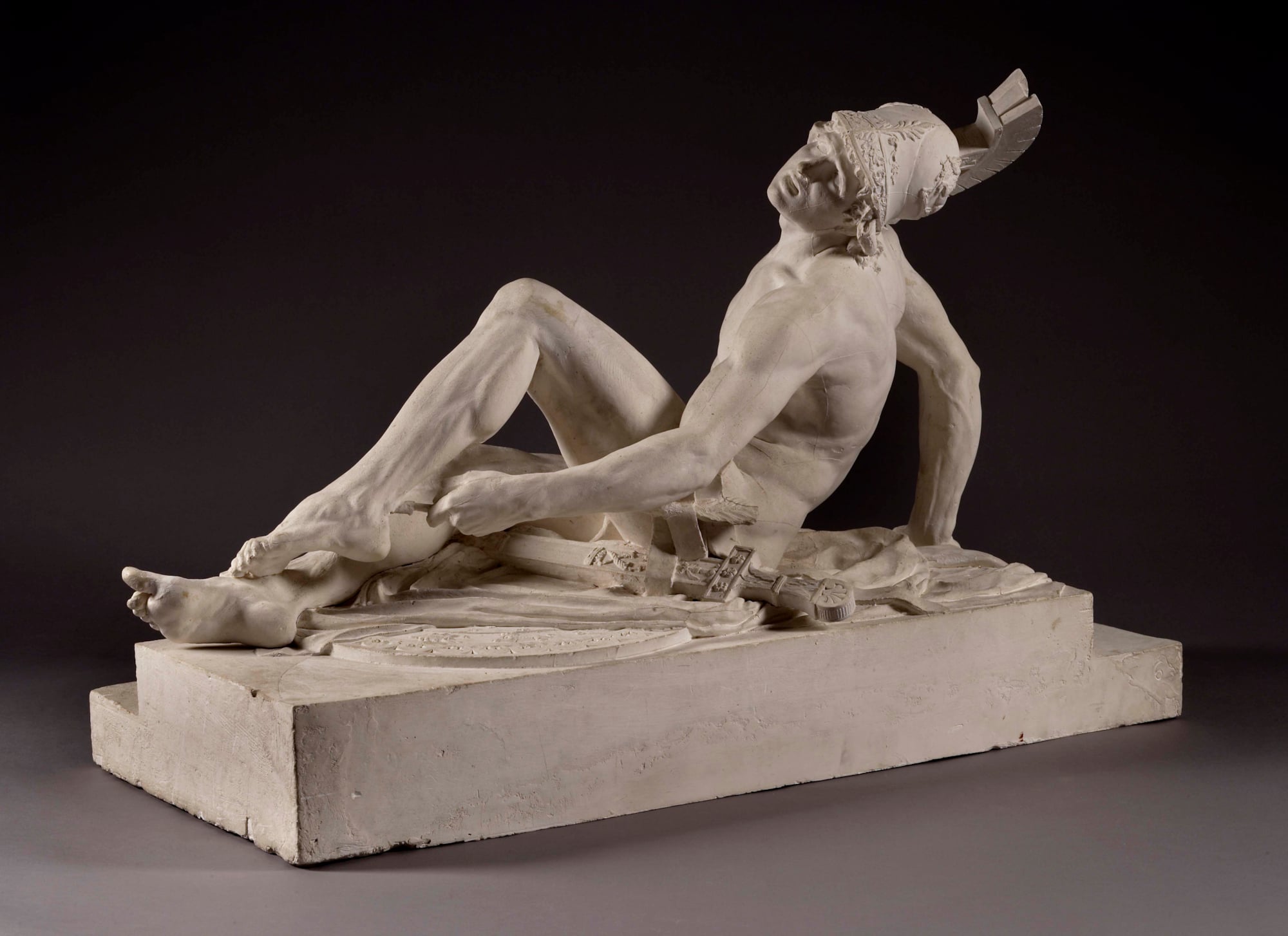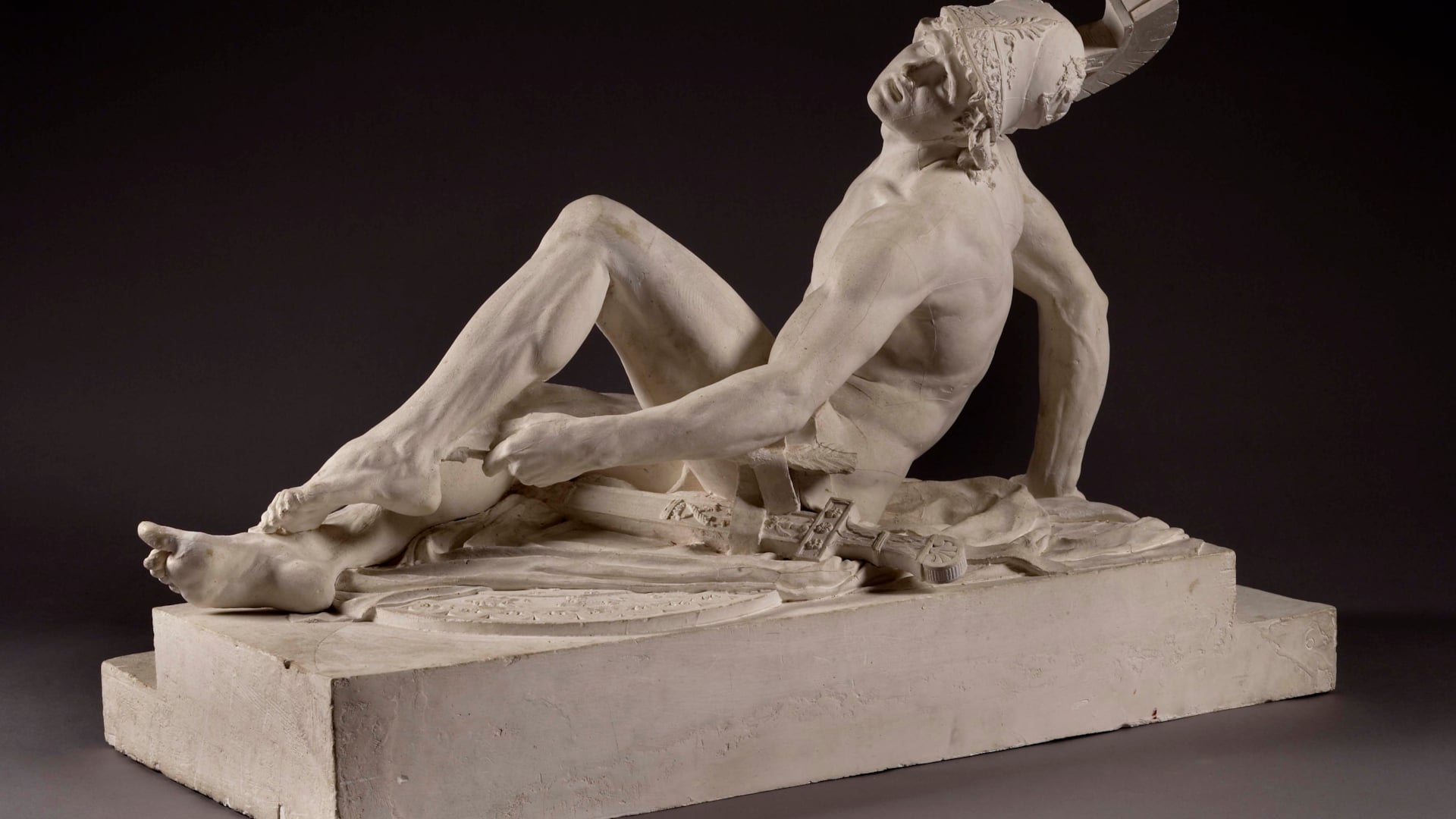

Provenance:
- Collection Henricy, Aix-en-Provence
- Collection Henricy, Aix-en-Provence
Exhibited:
- Marseille, Exposition des Beaux-Arts, 1861, n. 1678
- Marseille, Exposition des Beaux-Arts, 1861, n. 1678
Biographical references:
- Miel, ‘Notice sur les deux Giraud’, Annales de la Société libre des Beaux-Arts, 1839-1840, pp. 105-113
- B. Fillon, ‘Lettre de David à Wicar’, Nouvelles Archives de l’art français, 1874–5, pp. 401–4 (letter about Giraud)
- S. Lami, Dictionnaire des sculpteurs de l’école française sous le règne de Louis XIV, 1906
- M. Shedd, ‘A neo-classical connoisseur and his collection: J. B. Giraud’s museum of casts at the Place Vendôme’, Gazette des Beaux-Arts, April 1984, pp. 198–206
- P. Durey: ‘Le Néo-classicisme’, La Sculpture française au XIXème siècle, exh. cat., Paris, Grand Palais, 1986, pp. 288–90, 292, 300, fig. 338 (described by Philippe Durey in the catalogue as ‘one of the highest achievements of neo-classical sculpture before the revolution’)
- A. Maral, Sculptures, la galerie du musée Granet, Aix-en-Provence, 2003, pp. 76-77
- Miel, ‘Notice sur les deux Giraud’, Annales de la Société libre des Beaux-Arts, 1839-1840, pp. 105-113
- B. Fillon, ‘Lettre de David à Wicar’, Nouvelles Archives de l’art français, 1874–5, pp. 401–4 (letter about Giraud)
- S. Lami, Dictionnaire des sculpteurs de l’école française sous le règne de Louis XIV, 1906
- M. Shedd, ‘A neo-classical connoisseur and his collection: J. B. Giraud’s museum of casts at the Place Vendôme’, Gazette des Beaux-Arts, April 1984, pp. 198–206
- P. Durey: ‘Le Néo-classicisme’, La Sculpture française au XIXème siècle, exh. cat., Paris, Grand Palais, 1986, pp. 288–90, 292, 300, fig. 338 (described by Philippe Durey in the catalogue as ‘one of the highest achievements of neo-classical sculpture before the revolution’)
- A. Maral, Sculptures, la galerie du musée Granet, Aix-en-Provence, 2003, pp. 76-77
Born in 1752 in Aix-en-Provence and first trained as a goldsmith in his native city and in Paris, Jean Baptiste Giraud studied sculpture in Italy in the early 1780s, where he struck up a friendship with Jacques-Louis David. On his return in 1788 he was approved (agréé) by the Académie Royale in Paris and was received as a member in the following year. Inheriting a fortune upon the death of his uncle, he returned to Italy in 1790 and spent 8 years living in Florence, Rome and Naples. During this time he assembled a very important group of plaster casts after antique sculpture which he then brought back to France and exhibited to the public at his house on the Place Vendôme in Paris. He also contributed to the most popular work of art history in France of that period, the Recherches sur l’art statuaire, considéré chez les anciens et chez les modernes, published in 1805 by Toussaint-Bernard Emeric-David .
A highly skilled sculptor, Giraud was greatly admired by his contemporaries. Jacques Louis David, in a letter of recommendation to Wicar dated 17th September 1789, introduces his friend Giraud to Wicar who was then living in Florence: ‘C’est celui qui vient de faire chez nous une figure de réception représentant Achille…Cette figure l’a fait recevoir tout blanc…C’est certainement la première figure et le premier sculpteur chez nous ; c’est le seul qui tient réellement de l’antique et qui soit réellement savant [He is the one back at home (in France) who just made a sculpture representing Achilles for his ‘réception’…As a result of this figure he was unanimously accepted (into the Académie) … Certainly it is the best sculpture and he is the best sculptor we have at the moment ; he is the only one who really understands the antique and who is really knowledgable]. Giraud was also listed as one of the few artists gifted enough to undertake the restoration of the Laocoon brought to Paris from Rome by Napoleon in 1799.
A rare artist, Giraud produced very few works of his own, his financial independence allowing him to employ his time enriching his museum of casts after ancient sculpture. He did however participate at the Paris Salon in 1789. He exhibited his morceau de réception for the Académie Royale, an Achille blessé (Achilles wounded) in marble, which was acclaimed by his contemporaries . A manifesto of his knowledge of classical art, adopting the formal presentation of the Dying Gladiator , the Achilles displays Giraud’s talent in rendering the male anatomy with great veracity. During the troubled period of the Revolution, Giraud was able to retrieve his marble from the collections of the Académie Royale and gave it to his native town in 1823; it is now in the Musée Granet.
The present plaster is the model for this celebrated sculpture. It was once part of a private collection in Aix-en-Provence and exhibited in Marseille in 1861.
A highly skilled sculptor, Giraud was greatly admired by his contemporaries. Jacques Louis David, in a letter of recommendation to Wicar dated 17th September 1789, introduces his friend Giraud to Wicar who was then living in Florence: ‘C’est celui qui vient de faire chez nous une figure de réception représentant Achille…Cette figure l’a fait recevoir tout blanc…C’est certainement la première figure et le premier sculpteur chez nous ; c’est le seul qui tient réellement de l’antique et qui soit réellement savant [He is the one back at home (in France) who just made a sculpture representing Achilles for his ‘réception’…As a result of this figure he was unanimously accepted (into the Académie) … Certainly it is the best sculpture and he is the best sculptor we have at the moment ; he is the only one who really understands the antique and who is really knowledgable]. Giraud was also listed as one of the few artists gifted enough to undertake the restoration of the Laocoon brought to Paris from Rome by Napoleon in 1799.
A rare artist, Giraud produced very few works of his own, his financial independence allowing him to employ his time enriching his museum of casts after ancient sculpture. He did however participate at the Paris Salon in 1789. He exhibited his morceau de réception for the Académie Royale, an Achille blessé (Achilles wounded) in marble, which was acclaimed by his contemporaries . A manifesto of his knowledge of classical art, adopting the formal presentation of the Dying Gladiator , the Achilles displays Giraud’s talent in rendering the male anatomy with great veracity. During the troubled period of the Revolution, Giraud was able to retrieve his marble from the collections of the Académie Royale and gave it to his native town in 1823; it is now in the Musée Granet.
The present plaster is the model for this celebrated sculpture. It was once part of a private collection in Aix-en-Provence and exhibited in Marseille in 1861.